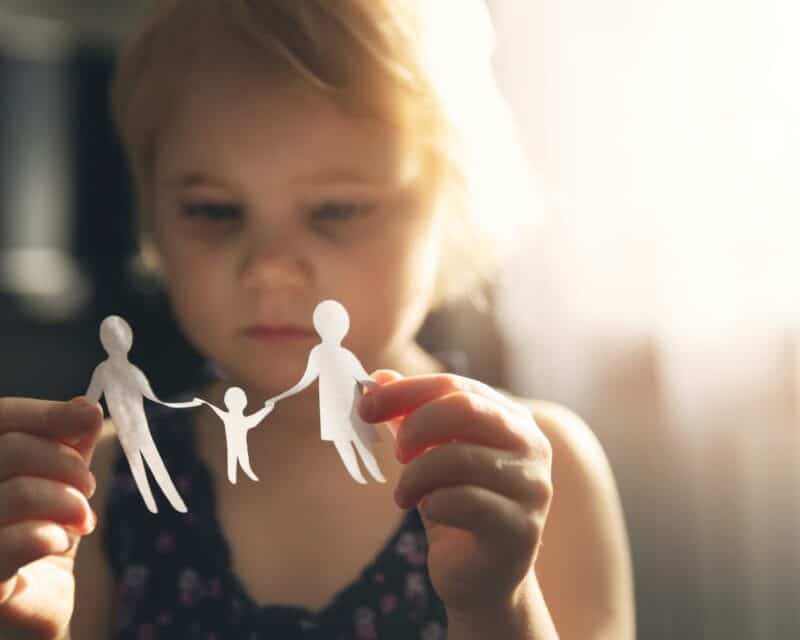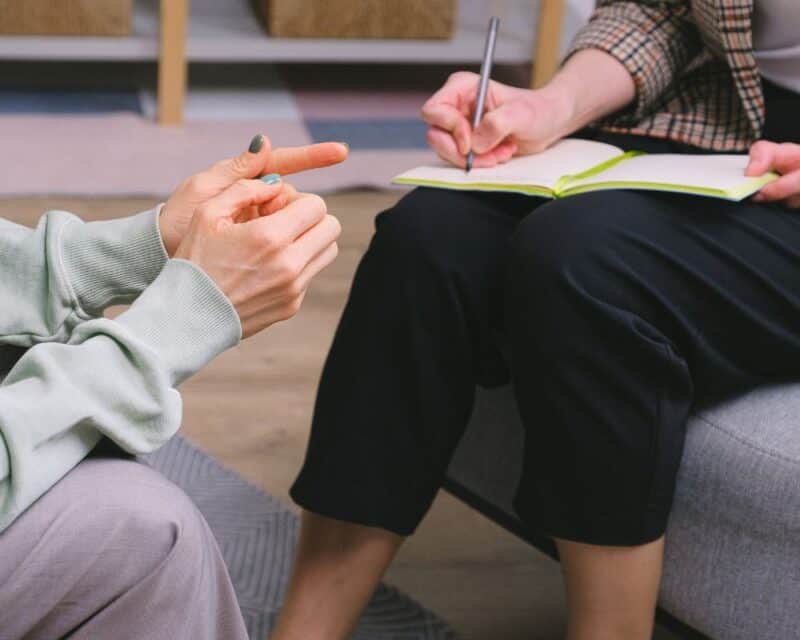In the tapestry of our lives, childhood experiences weave threads that shape our adult selves. Yet, for many, this fabric is marked by the stains of childhood trauma, leaving behind invisible scars that linger into adulthood. From the echoing whispers of harsh criticism to the chilling spectre of emotional abuse, these wounds carve deep into our psyche, influencing our relationships, our self-esteem, and our mental well-being. In this article, we embark on a journey of healing, delving into the labyrinth of inner child wounds to understand their profound impact on our lives. Through exploration, reflection, and the gentle embrace of self-discovery, we seek to unravel the tangled knots of past trauma and pave a path towards inner peace and wholeness. Join us as we navigate the terrain of childhood emotional wounds, illuminating the path towards healing and reclaiming our true selves.
Childhood Trauma: Understanding the Impact of Inner Child Wounds

Childhood trauma encompasses a spectrum of painful experiences that profoundly affect individuals throughout their lives. From emotional abuse to physical neglect, these wounds shape our perceptions of self and the world around us.
The Importance of Addressing Inner Child Wounds in Adult Life
The scars of childhood trauma often manifest in adulthood as low self-esteem, mental health issues, and a constant fear of abandonment. Ignoring these wounds can perpetuate negative coping mechanisms and hinder personal growth and well-being.
Overview of the Healing Process: Embracing Inner Child Work
Embarking on the journey of healing childhood emotional wounds involves delving into the depths of our younger selves and reclaiming our true essence. Inner child work provides a safe space to explore past trauma, confront abandonment wounds, and nurture our own needs. Through this transformative process, individuals can cultivate inner peace and break free from the chains of their past, ultimately leading to a more fulfilling and authentic life.
Understanding Childhood Emotional Wounds

Delving into the Depths: Exploring the Impact of Childhood Trauma
As we journey through life, our younger selves often bear the burden of abandonment wounds and the weight of traumatic experiences. These wounds, etched into the very fabric of our being, shape our coping mechanisms and defence mechanisms as we navigate the complexities of daily life. From the earliest encounters with physical abuse to the echoes of insecure attachment, our nervous systems become finely tuned to the threat of rejection and the fear of loneliness. These experiences create a landscape of negative emotions and beliefs that can shadow our true selves, hindering our ability to form intimate relationships and diminishing our children’s self-esteem. Through the lens of attachment theory and the insights of experts like Lise Bourbeau, we gain awareness of the signs of a wounded inner child, illuminating the path towards inner child healing and the next steps on our healing journey.
Unravelling the Tapestry: Exploring Common Types of Childhood Emotional Wounds
Childhood trauma manifests in a myriad of ways, leaving behind a trail of emotional scars that reverberate throughout our entire lives. From the deepest emotional wounds born of emotional childhood wounds to the surface-level neglect wounds that leave loose ends in our early years, each experience shapes our perception of self and the world around us. Traumatic events, both big and small, imprint themselves onto our psyche, influencing our thoughts, feelings, and behaviours in daily life. The fear of abandonment and the constant need for validation become our closest companions, while the spectre of past experiences looms large in intimate relationships and romantic partnerships. Through the exploration of these most common emotional wounds, we begin to untangle the threads of our past, forging a path towards healing and reclaiming our inner peace.
Bridging the Gap: Understanding the Connection Between Childhood Experiences and Adult Mental Health Issues
Our childhood memories and traumas do not exist in isolation but rather serve as the foundation upon which our adult selves are built. From the earliest encounters with authority figures to the feeling of injustice in the face of harsh criticism, these experiences shape our beliefs and perceptions of the world. Traumatic childhoods give rise to post-traumatic stress disorder and a variety of mental health problems, while neglect wounds and emotional pain create a landscape of negative beliefs that can colour our entire existence. Yet, amidst the darkness, there is hope. Through the support of trauma therapists and the exploration of emotional freedom techniques, we begin to navigate the labyrinth of our past, finding solace in the embrace of emotional support and the healing power of personal experience.
Signs of a Wounded Inner Child

Unveiling the Mask: Recognising Signs of Inner Child Wounds in Daily Life
Our younger selves often leave behind subtle clues, manifesting as abandonment wounds and defence mechanisms that shape our adult selves. These signs may surface as coping mechanisms in the face of adversity or as a constant fear of rejection in our interactions with others. Negative feelings and thoughts of unworthiness become our constant companions while our nervous system remains on high alert, ready to defend against perceived threats. In the presence of romantic partners or in front of other people, our true selves may feel overshadowed by the wounds of our past, hindering our ability to form meaningful connections and experiences. Through heightened awareness and introspection, we begin to unravel the layers of our inner child wounds, shedding light on the unconscious motivations that drive our behaviour and emotions.
Tracing the Roots: Recognising How Past Trauma Manifests in Present Behavior and Emotions
The echoes of past trauma reverberate through our present experiences, shaping our thoughts, feelings, and interactions with the world. Our defence mechanisms, forged in the crucible of difficult experiences, become our constant companions, shielding us from perceived threats and preserving our fragile sense of self. In the pursuit of constant validation and acceptance, we may find ourselves trapped in cycles of negative beliefs and behaviours, perpetuating the wounds of our younger selves. These core wounds, etched into the very fabric of our being, colour our entire existence, influencing our relationships with family members, friends, and romantic partners. Through the guidance of trauma therapists and the support of loved ones, we begin to navigate the labyrinth of our past, finding solace in the healing power of therapy and the transformative journey of self-discovery.
Illuminating the Path: The Role of Attachment Theory in Understanding Inner Child Wounds
Attachment theory provides a framework for understanding the intricate dance between our younger selves and our adult selves, shedding light on the dynamics of intimate relationships and emotional bonds. Fears of abandonment and the constant need for reassurance stem from insecure attachments formed in childhood, shaping our perception of the world and our place within it. Through the exploration of our younger part and the recognition of our deepest emotional wounds, we begin to unravel the tangled web of past experiences, forging a path towards healing and wholeness. In the embrace of new experiences and the cultivation of awareness, we reclaim our true selves, breaking free from the shackles of our past and stepping into the light of our own potential.
Healing the Inner Child: The Healing Process
Nurturing the Younger Self: Exploring Inner Child Healing Process
The journey of healing the inner child begins with acknowledging and embracing our younger selves, tenderly tending to the wounds of abandonment and the scars of past trauma. This process involves peeling back the layers of defence mechanisms that shield our true selves, allowing us to confront the core wounds that have plagued us throughout our entire lives. Through self-reflection and introspection, we begin to unravel the tangled knots of our inner turmoil, paving the way for profound transformation and growth.
Techniques and Therapies: Addressing Childhood Trauma and Healing the Inner Child
There are a variety of ways to address childhood trauma and embark on the path of inner child healing. From traditional forms of therapy to innovative techniques such as soul wounds and unconscious motivation, each approach offers a unique opportunity for healing and self-discovery. Trauma therapists guide us through the labyrinth of our past, offering insight and support as we navigate the depths of our inner turmoil. Through the exploration of leadership roles and the cultivation of awareness, we uncover the hidden motivations that drive our behaviour and emotions, empowering us to break free from the chains of our past and step into the light of our own potential.
Creating a Safe Space: The Importance of Inner Child Work
Central to the healing process is the creation of a safe space where inner child work can flourish. This sanctuary provides a refuge from the storms of life, allowing us to explore our deepest fears and vulnerabilities without judgment or condemnation. Through the support of closest friends and the guidance of trauma therapists, we cultivate an environment of trust and acceptance, enabling us to confront our darkest demons and emerge stronger and more resilient than ever before. In this sanctuary of healing, we reclaim our power and rediscover our true selves, unlocking the door to a life of joy, fulfilment, and inner peace.
Steps Towards Inner Child Healing

The First Step: Cultivating Awareness of Your Inner Child and Their Needs
Embarking on the journey of inner child healing begins with the foundational step of cultivating awareness of your inner child and their unmet needs. The abandonment wounds and core wounds that have shaped your adult self often originate from the experiences of your younger version. Take a moment to reflect on these experiences, allowing yourself to acknowledge the pain and vulnerability that may have been buried deep within. Through introspection and self-exploration, you can begin to unravel the layers of defence mechanisms that have shielded you from confronting these wounds, paving the way for profound healing and transformation.
Embracing Acceptance and Validation of Your Younger Self
As you delve deeper into your inner child work, it becomes essential to embrace acceptance and validation of your younger self. Your true self, often overshadowed by negative experiences and thoughts of rejection, yearns for recognition and acknowledgement. Take the time to nurture and comfort your inner child, offering reassurance and love in moments of vulnerability. Through acts of self-compassion and forgiveness, you can begin to mend the wounds of the past and forge a deeper connection with your authentic self. Remember that you are your own best ally, not your worst enemy, and deserve to be treated with kindness and respect.
Letting Go of Past Trauma and Painful Experiences
The final step in the process of inner child healing involves letting go of past trauma and painful experiences that have haunted you throughout your entire life. This requires courage and resilience as you confront the negative experiences and defence mechanisms that have shaped your adult self. Seek professional help from a trauma therapist or counsellor who can provide guidance and support as you navigate this challenging terrain. Through the therapeutic process, you can explore a variety of therapeutic techniques and forms of therapy, such as cognitive-behavioural therapy or somatic experiencing, to help you release pent-up emotions and heal deep-seated wounds. Remember that healing is a journey, and with patience and perseverance, you can reclaim your sense of self and experience a higher quality of life filled with love, joy, and inner peace.
Seeking Professional Help

Recognising the Importance of Seeking Professional Help for Healing Abandonment Wounds
When coping mechanisms and defence mechanisms fail to provide relief from the pain of abandonment wounds, seeking professional guidance becomes paramount. Therapists specialising in childhood trauma can offer invaluable support and insight, helping individuals navigate the complexities of their core wounds and physical wounds. By addressing the needs of others and prioritising self-care, individuals can take the first step towards healing and reclaiming their sense of self.
Exploring Therapeutic Options for Healing Core Wounds
Therapeutic interventions offer a variety of effective strategies for addressing core wounds stemming from abandonment and sexual abuse. From cognitive-behavioural therapy to specialized forms of trauma therapy, such as Eye Movement Desensitization and Reprocessing (EMDR), individuals can find a form of therapy that resonates with their unique needs and experiences. Substance use disorders may also be addressed through therapy and support groups, providing individuals with the tools and resources needed to overcome addiction and reclaim their lives.
Embracing the Benefits of Therapy and Professional Support in the Healing Journey
Therapy provides a safe and confidential space for individuals to explore their deepest wounds and experiences. By adhering to a privacy policy that ensures confidentiality and respect, therapists create an environment where individuals feel empowered to share their stories and embark on a journey of healing. As individuals navigate their first experiences in therapy, they may discover a newfound sense of hope and resilience. Through the support of therapists and the exploration of therapeutic techniques, individuals can begin to heal from the scars of their past and cultivate healthy, fulfilling romantic relationships.
Embracing Inner Child Healing in Daily Life

Integrating Inner Child Healing Practices into Daily Life
Incorporating inner child healing practices into our daily routines is essential for addressing the deep-seated wounds of abandonment and the coping mechanisms we’ve developed over time. By consciously nurturing our inner child, we create space for healing and growth amidst life’s challenges. This might involve setting aside time each day for self-reflection, journaling, or engaging in activities that bring us joy and comfort. By making inner child healing a priority, we honour our core wound and take proactive steps towards healing.
Prioritising Self-Care and Nurturing Your Inner Child
Nurturing our inner child requires us to prioritise our own needs and well-being, even during the most difficult times. Instead of relying solely on defence mechanisms to cope with adversity, we can offer ourselves the same compassion and understanding we would give to a younger version of ourselves. This might involve practising self-compassion, setting healthy boundaries, or seeking support from loved ones and professionals. By tending to our core wound with kindness and care, we lay the foundation for lasting healing and resilience.
Cultivating Resilience and Inner Peace through Inner Child Work
Building resilience and inner peace through inner child work involves confronting our core wound with courage and compassion. Instead of viewing our past experiences as sources of shame or pain, we can reframe them as opportunities for growth and transformation. By embracing the good news that healing is possible, we empower ourselves to break free from the cycle of coping mechanisms and defence mechanisms that have held us back. Through inner child work, we discover the strength and resilience to navigate life’s challenges with grace and authenticity.
Conclusion
Reflecting on the Profound Impact of Abandonment Wounds and Coping Mechanisms
As we conclude our exploration of childhood emotional wounds and the coping mechanisms we’ve developed, it’s crucial to reflect on the profound impact these experiences have on our adult lives. Abandonment wounds, rooted in early experiences of rejection or neglect, shape the way we navigate relationships, self-esteem, and emotional well-being. Similarly, coping mechanisms, while initially serving to protect us from pain, can become barriers to true healing and connection. It’s essential to recognize the role these defence mechanisms play in our lives and the ways they may be holding us back from reaching our full potential.
Encouragement to Embark on the Healing Journey and Prioritise Inner Child Healing
In light of the insights gained from our exploration, I encourage you to embark on the healing journey and prioritise inner child healing. This journey is not always easy, and it may require courage to confront past wounds and challenge ingrained patterns of behaviour. However, by taking the first step towards healing, you open yourself up to the possibility of profound transformation and growth. Remember that you are worthy of love, acceptance, and healing and that you have the strength within you to overcome even the most difficult challenges.
Reiteration of the Importance of Addressing Childhood Trauma for Overall Well-being
Finally, I want to reiterate the importance of addressing childhood trauma for overall well-being. Ignoring or suppressing these wounds may lead to continued suffering and hinder personal growth. By shining a light on our past experiences and actively working towards healing, we can break free from the cycle of pain and create a brighter, more fulfilling future. Whether through therapy, self-reflection, or seeking support from loved ones, know that you are not alone on this journey. Together, we can heal the wounds of the past and cultivate a life filled with joy, resilience, and inner peace.

